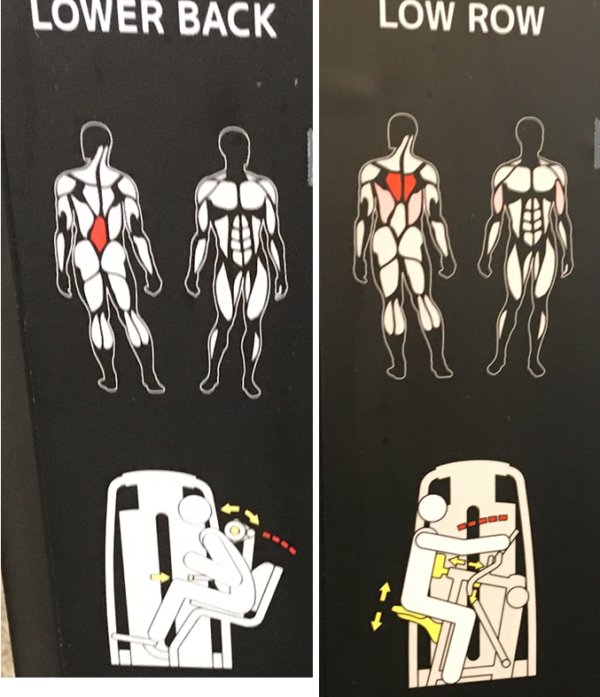This post addresses every sports person where running is a part of the sport because we can all have benefits of Strength and weight training as Cross Training, which you will see. My starting point is middle- long distance runners as models. The 6 Benefits of Practical Cross Training For Runners are about creating a resilient base to develop physical skills, optimizing your movements, strength, preventing injuries, and increasing motivation and surplus.

Strength Training as Cross-Training
Many runners tend to “look the other way” when it comes to Cross-training. If you have consulted a physiotherapist with an injury or had a real trainer, you would in 9 out of 10 times be told to do strength and stability exercises.
It’s an essential part of running well and prevents injuries. Lack of strength training can be the limiting factor for improvement because your running economy is too poor and because you are constantly running into injuries.
Most middle- long distance runners, will in the starting period of a season in varying degree, work on getting stimulate all the systems that affect their running shape. That is fitness, endurance, strength and the ability to run fast and long, of course without overloading the body too much.
This means that the training becomes versatile, and we train both high-intensity intervals, moderate tempo run at a steady pace, hill training and long calm LSD runs. Throughout the period, strength and weight training can be used as Cross-training.
In addition to preventing injuries, Strength and/or Weight Training is the simplest and most effective way to maintain and develop the body’s muscles, tendons and bones.
When you perform strength training exposes the body to loads as it’s not used to. It responds by adapting to the new requirements and becomes stronger after what is called the supercompensation principle.

Optimize your training
For cross training to be as effective as possible, it must be adapted to your body, your current strength level and your running need. You have to be sure to apply progressive overload to the body. The body’s ability to improve and develop its capacity is called adaptation.
The human body consists of a wide range of physiological systems, all of which are capable of adapting. But the condition is that the training is organized in a way, so all systems become affected specifically.
Ex. Increasing upper body strength is very important late in a marathon race, as neck and shoulder muscles often become fatigued. Upper body strength is also an important asset in running up hills.
Progressive Overload
Progressive overload is when you gradually increase your strength training routine. Progressive overload can be achieved by:
- Increase the load
- Increase the number of repetitions
- Change the speed of repetitions with high load
- Shorten the breaks between repetitions, sets and Training sessions
Whether you choose the strength training machines or free weights, there are some terms “In the business” you should know:
Repetitions
The term covers a single execution of an exercise. Usually, a repetition consists of two phases. A concentric phase where the weight is lifted and an eccentric phase where it is subsequently lowered. For example, if you do ten push-ups, it will equal ten repetitions.
Number of Sets
A set is any number of repetitions performed consecutively without a break. A set can thus in principle consist of one, two or more repetitions. In most training programs, you operate with anything from 5 to 20 repetitions.
Repetition Maximum (RM)
RM is an abbreviation for Repetition Maximum, which means the maximum number of repetitions you can handle with the correct technique in one set, i.e. all the weight you can lift once. RM thus depends on the load. If you can take 10 repetitions but have to give up halfway to the 11, we say that you train with 10 RM.
The weight you have to train with can be calculated as a percentage of the weight you can handle in a single repetition or 1 RM. 1 RM is of course very demanding and should only be performed by well-trained people.

Usually, We Distinguish Between Two Types Of Cross Training
Strength training
During the decidedly strength training, heavy weights are lifted a few times – 1 – 8 repetitions at 80 – 100% of the maximum. This form of exercise usually means that over time, you will get stronger and gain bigger muscles. You also get heavier as a result of the increased muscle mass. But you do not burn nearly as much fat.
Endurance training
In endurance training as from 800 m to a marathon, on the other hand, a lift is repeated many times. For example. 12 – 25 times at about 60-70% of max. As a result, the muscles do not get bigger in the same way but they become more enduring and you lose fat – becoming leaner as the body increases fat burning by this exercise form.
As a middle or long-distance runner, it’s about being as light as possible for not carry on too much unnecessary “dead weight” as excess fat during the race. On the other hand, it’s also about making the muscles strong and resilient, without gaining weight, so you can keep up a good and effective running style throughout the chosen running distance.
To create balance, it is best to choose a weight and a number of repetitions that gives both strength, endurance and tighten up the body: 10-12 repetitions at about 70% of maximum, has proven to be a good starting point.
We usually choose 8 – 10 exercises per training session, and each exercise is performed as dynamic muscle training: 1 – 3 sets of 10 – 12 repetitions.
A strength training program for the whole body with the mentioned number of sets and repetitions can be completed in 45-60 min.
Be aware of your starting point
Remember to start with your current strength and experience level. Rather, take too light loads than the opposite in the beginning. You don’t want an injury when starting a new cross training routine.
Strength Training Machines

The safest way to train is to use the strength training machines, as they are specially designed, so you cannot do the movements incorrectly unless you take on too much weight and start making “alternative” movements to cope with the load. When you become more experienced you can use free weights if you want.
When you show up in a Fitness Center for the first time, you are offered a trial lesson, which has an important function. It’s a prerequisite for you to get a good start, which means doing the right thing from the beginning – in my opinion.
During the trial lesson, you can have your own personal program put together in consultation with the instructor – you can mention that you are a runner and want to use strength training as supplemental training.
The instructor will guide you in performing the exercises correctly. If you forget it another time, ask the Instructor again. But each machine is usually provided with a small illustration of which muscle groups you are training.
If you look at the picture below: The red area is the primary area, the lighter area as on the LOW ROW is the secondary area and then a label on how you perform the exercise.

Operation of the machines
Before you start with the strength training machines, remember to warm up for 10 – 20 minutes in one of the Cardio machines.
Start by adjusting the saddle height to suit you. Most often you pull in a handle under the seat to adjust the height. If the machine has a seat belt, so you stay in the correct sitting position while performing the exercise, then use it. Next set the machine to the correct load – try it out and start with a low load if this is your first time.
The most important thing is to get the feeling of the right execution of the movement. On most machines, the weight is regulated by pulling the small split pin out of the weight disc and inserting it in the hole by the desired weight indication (Picture below).

Strength Training And Running Performance
Previously, it has not been considered possible to increase muscle strength and endurance at the same time, as the training effect of the two forms of training are opposites. The reason is primarily, that strength training can increase muscle mass by increasing the size of the individual muscle cell.
This means that there becomes a greater distance from the capillaries around the muscle cell and into the middle of the muscle cell where a part of the mitochondria is located, and as you maybe remember, the mitochondria are the power station of the muscle cell.
When the diffusion distance becomes longer, the possibility of exchange nutrients- and waste products in and out of the muscle cell weakens. Long-distance running (aerobic training) improves the diffusion conditions by, among other things, increasing the number of capillaries.
If strength training and endurance training have to complement each other, it’s therefore important to find the balance, where you as a runner complete strength training without increasing the muscle mass significantly. Besides, larger muscles provide an increased weight that you have to carry with you during the race.
With many repetitions in each set in the strength machines (about 15) 2-3 times a week during the preparation period, the strength and endurance of the individual muscle fibers improve. Thereby, you can increase your running performance primarily by a better running economy and a better sense of surplus.
Practical Cross-Training At Home
Maybe you prefer to do cross-training at home because it’s easier and in these pandemic times the rules for training in fitness centers have changed. We all need to pay more attention to our behavior.
So we have found a really good alternative to training at home. I did not know that there are so many exciting types of workouts you can do from home or for yourself outside the fitness centers – Try this link below:
 Final Thoughts
Final Thoughts
Strength and weight training as Cross Training is easy to learn and do. There are many opportunities to adapt the exercises to your specific purpose depending on what you want to get out of it.
If you have less time, it’s a good idea to use fewer machines that work on several muscle groups at the same time. Maybe you will experience a little soreness in the beginning because of the body’s adaptation rules but soon you will experience the positive effects, that give results.
I hope you like this blog and if you have any questions about this topic or want to leave your own Personal review, please leave a comment below.
[faq-schema id=”2201″]







crosstraining can help with most sports especially running. But it can also help any sport that involves running. It is easy to plateau when training to run. There is a point that you need to increase strength to be able to move forward with regard to speed and endurance. I have only found crosstraining to help this.
Hi Caste
Thank you for the comment
I have used cross training in more than 10 years now as supplement to my running. And I was lucky enough to newer get an injury in that period. So it works wery well for me.
Be Well
hello there, Thanks for sharing this awesome article I know it would be of help to a lot of persons. Cross-training is one of the best ways to condition serval muscle groups, develop new sets of skills too.Cross-training also allows you the ability to vary the stress placed on specific parts and muscles and it also helps the functionality of the cardiovascular system.
Hi Ismeglamour
Thank you for the comment
I agree cross-training develops new set of skills that supports you in various way to a more balanced fitness.
Be Well
Hello there! this is an amazing review you have got here. I am sure these quality informations in this post will be of great help to anyone who come across it. One personal reason I engage in the cross training is that it allows you to try active recovery alongside periods of outright rest. Thanks!
Hi Joy
Thank you for the comment.
Personally I used cross taining because It gave me strength and a bigger wholeness comparing to the one sided running.
Be well